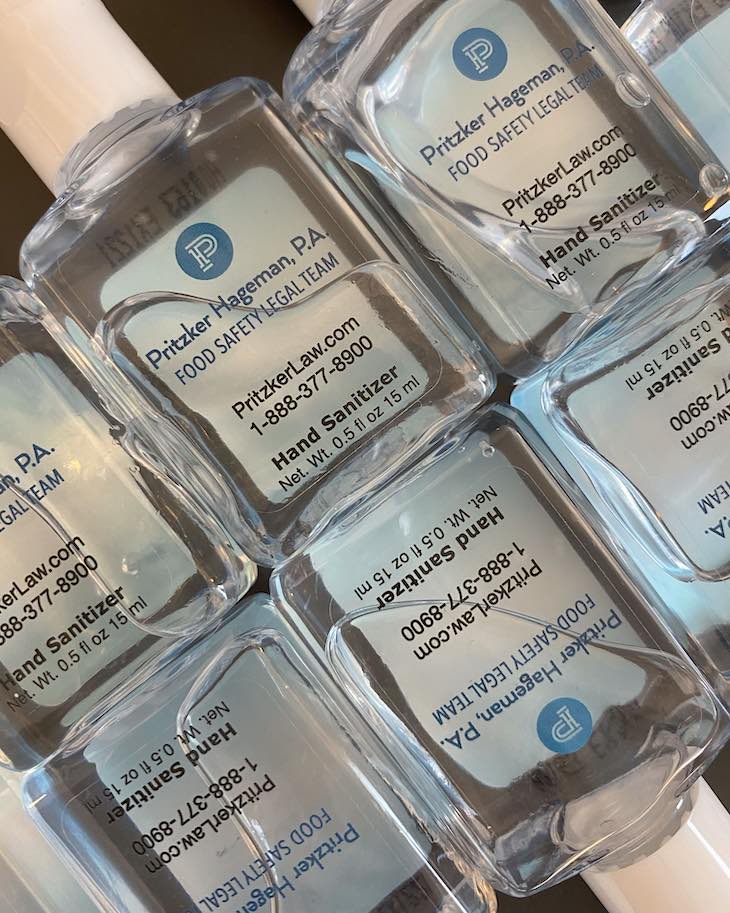The FDA warns that making home hand sanitizer can be dangerous, since people may not be able to formulate product that has the correct percentage of alcohol. It’s important to note that soap and water is the gold standard for cleaning your hands in the coronavirus pandemic.
It is easy to make hand sanitizer incorrectly, and it may not be effective or could be dangerous. But if you don’t have access to soap and water, this formulation was developed by infection disease specialists that can substitute for commercial sanitizers in a pinch only if made correctly. Follow this recipe closely if you choose to make it.
But remember, soap and water is best.
Hoarding as a result of the coronavirus pandemic has people worried and upset. The items that are most often hoarded include toilet paper and hand sanitizer. If you can’t buy hand sanitizer, what can you do? Buy these ingredients and make this recipe for hand sanitizer.

It’s worth noting that soap and water is the absolute best method for killing coronavirus. The virus has a fatty coating. Soap is soluble in water and attracts fat. So soap removes the virus from your skin so it can be rinsed off. Still, hand sanitizer is useful when you don’t have access to soap and running water. Much of this information came from Food Safety Talk with Don Schaffner and Ben Chapman on Apple podcasts.
Adding anything other than products that kill the virus will reduce efficacy of sanitizers. So beware of any recipes that tell you to add a large proportion of ingredients like glycerin or scents. The minimum proportion of 99% alcohol to other ingredients is 2:1.
If you put this sanitizer in a spray bottle, glycerin can clog nozzle. Glycerin or glycerol is added to purchased hand sanitizer as a humectant, which helps reduce skin dryness. You can add some humectants, but keep the proportion low. If you are making this sanitizer to clean surfaces, just use alcohol. If you making it for your hands, think about adding the glycerin.
Homemade hand sanitizer has to have at least 60% alcohol by volume to work. The alcohol you buy should be isopropyl, or rubbing, alcohol at 99% strength.
Here’s the recipe for hand sanitizer: Combine 2/3 cup rubbing alcohol and 1/4 to 1/3 cup glycerin or aloe vera gel in a bowl. Mix this very well until completely blended. This can take some time because it’s not easy to combine alcohol with gels. You can add a few drops of scent such as essential oil to mask the alcohol smell, but that isn’t necessary.
When the sanitizer is mixed, pour it into a small bottle that you have sterilized by rinsing with alcohol and air drying. Add the cap and label the bottle and date so you know what it is.
You can use this solution to make your own antiseptic wipes too. Buy paper towel that is divided into small tearable sheets, each sheet about 1/3 the size of a full sheet. Cut the roll into thirds, then remove the cardboard core. Start rolling up the paper towel, first rolling at an angle so you can pull the towels out from the middle. Put the paper towel roll in a small sterilized mason jar and add the sanitizer. Screw on the lid and label the jar.
Make sure that any children who use this product are supervised by an adult. Store it out of the reach of children. Let your hands dry completely before you eat or touch anything else. And don’t use hand sanitizers if your hands have visible dirt or grease because the sanitizer won’t be as effective.




